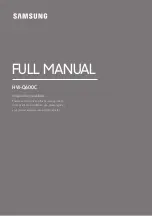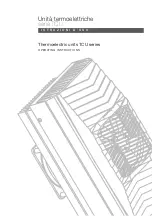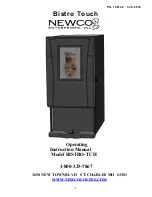
CUTMASTER 152
OPERATION 4T-6
Manual 0-4987
3. In a portion of the unwanted metal start the
pierce off the cutting line and then continue
the cut onto the line. Hold the torch per-
pendicular to the workpiece after the pierce
is complete.
4. Hold the torch away from your body.
5. Slide the trigger release toward the back
of the torch handle while simultaneously
squeezing the trigger. The pilot arc will
start.
A-02986
Trigger
Trigger Release
6. Bring the torch within transfer distance to
the work. The main arc will transfer to the
work, and the pilot arc will shut OFF.
NOTE
The gas preflow and postflow are a charac-
teristic of the power supply and not a func-
tion of the torch.
When the shield cup is properly installed,
there is a slight gap between the shield cup
and the torch handle. Gas vents through
this gap as part of normal operation. Do
not attempt to force the shield cup to close
this gap. Forcing the shield cup against
the torch head or torch handle can damage
components.
7. Clean spatter and scale from the shield cup
and the tip as soon as possible. Spraying
the shield cup in anti - spatter compound
will minimize the amount of scale which
adheres to it.
Cutting speed depends on material, thickness,
and the operator’s ability to accurately follow the
desired cut line. The following factors may have
an impact on system performance:
• Torch parts wear
• Air quality
• Line voltage fluctuations
• Torch standoff height
• Proper work cable connection
4T.05 Gouging
!
WARNING
Be sure the operator is equipped with proper
gloves, clothing, eye and ear protection and
that all safety precautions at the front of this
manual have been followed. Make sure no
part of the operator’s body comes in con-
tact with the workpiece when the torch is
activated.
Disconnect primary power to the system be-
fore disassembling the torch, leads, or power
supply.
CAUTION
Sparks from plasma gouging can cause
damage to coated, painted or other surfaces
such as glass, plastic, and metal.
Check torch parts. The torch parts must cor-
respond with the type of operation. Refer to
Section 4T.07, Torch Parts Selection.
Gouging Parameters
Gouging performance depends on parameters
such as torch travel speed, current level, lead angle
(the angle between the torch and workpiece), and
the distance between the torch tip and workpiece
(standoff).
CAUTION
Touching the torch tip or shield cup to the
work surface will cause excessive parts
wear.
Torch Travel Speed
NOTE
Refer to Appendix Pages for additional infor-
mation as related to the Power Supply used.
Optimum torch travel speed is dependent on current
setting, lead angle, and mode of operation (hand or
machine torch).
Current Setting
Current settings depend on torch travel speed,
mode of operation (hand or machine torch), and the
amount of material to be removed.
Содержание 152 CUTMASTER
Страница 4: ...This Page Intentionally Blank...
Страница 14: ...CUTMASTER 152 GENERAL INFORMATION 1 8 Manual 0 4987 This Page Intentionally Blank...
Страница 22: ...CUTMASTER 152 INTRODUCTION 2T 4 Manual 0 4987 This Page Intentionally Blank...
Страница 32: ...CUTMASTER 152 OPERATION 4 4 Manual 0 4987 This Page Intentionally Blank...
Страница 54: ...CUTMASTER 152 OPERATION 4T 22 Manual 0 4987 This Page Intentionally Blank...
Страница 69: ...CUTMASTER 152 Manual 0 4987 6 5 PARTS LIST A 07994_AB 1 4 2 3 5 6 7 8 9 10 12 11 10 13...
Страница 72: ...CUTMASTER 152 PARTS LIST 6 8 Manual 0 4987 This Page Intentionally Blank...
Страница 77: ...CUTMASTER 152 Manual 0 4987 A 5 APPENDIX This Page Intentionally Blank...
Страница 83: ...This Page Intentionally Blank...
















































